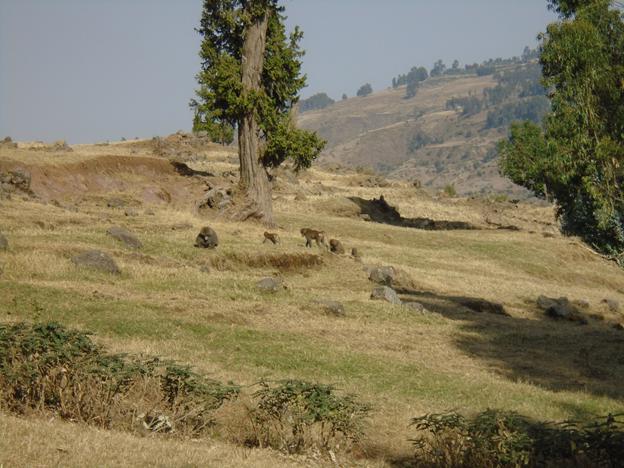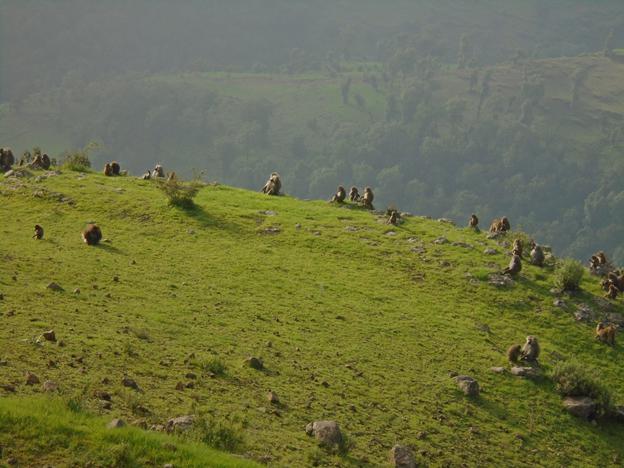Hussein Ibrahim Seid
Hamadryas baboons (Papio hamadryas) are locally threatened due to the ever-increasing human pressure for settlement and agricultural land expansion. Therefore, this study aims to assess the effect of habitat destruction and human encroachment on the behaviour and ecology of hamadryas baboons by comparing the feeding ecology, activity budget, ranging patterns and habitat use of the species in and around BSNP, northern Ethiopia including study areas of both high and low anthropogenic disturbances. The results of my study will increase our knowledge of this rarely studied species and will also be used to design conservation management strategies.

The smallest group of hamadryas baboons foraging outside the park.
Hamadryas baboons (Papio hamadryas) is a species of baboon which is widely distributed in north-east of Africa. However, the species is primarily found in lowland and highland ecosystems of Ethiopia. Although hamadryas baboon has large geographic range, however, the population in Ethiopia is severely fragmented particularly in the central Highlands of Ethiopia. Hamadryas baboon is currently facing conservation challenges because of the ongoing habitat loss and fragmentation associated with high human population pressure and agricultural land expansion and hunting due to its crop raiding behaviour (in particular for populations near to agricultural lands) similar to other threatened primates of Ethiopia (Mekonnen et al., 2012; Tesfaye et al., 2013). Comparative studies on the behaviour and ecology of a species living in the human dominated landscape and protected habitat is imperative to designing conservation management strategies (Mekonnen et al., 2017). Thus, we aimed to assess the effects of habitat destruction and human encroachment on the behavioural ecology of two hamadryas baboon troops by studying their feeding ecology, activity budget, ranging ecology and habitat use in and around Borena-Sayint National Park, northern Ethiopia. The study will be carried out using scan sampling and spatial analysis techniques (Altman 1974; Mekonnen et al., 2017).

Resting of hamadryas baboons and geladas towards sunset.
The results of this study will help to increase our knowledge of the behaviour and ecology of hamadryas baboon, a species which has largely been studied only in lowland habitats (Kummer, 1968; Swedell, 2006). This project will help not only to designing conservation management strategies for hamadryas baboon but also other wildlife in the region and their habitats. In addition, the information obtained from this study will be given to decision makers and conservation initiatives for effective conservation activities.
The possible role of the public under a participatory management program and solutions to tackle conservation problems will be presented in meetings and workshops.